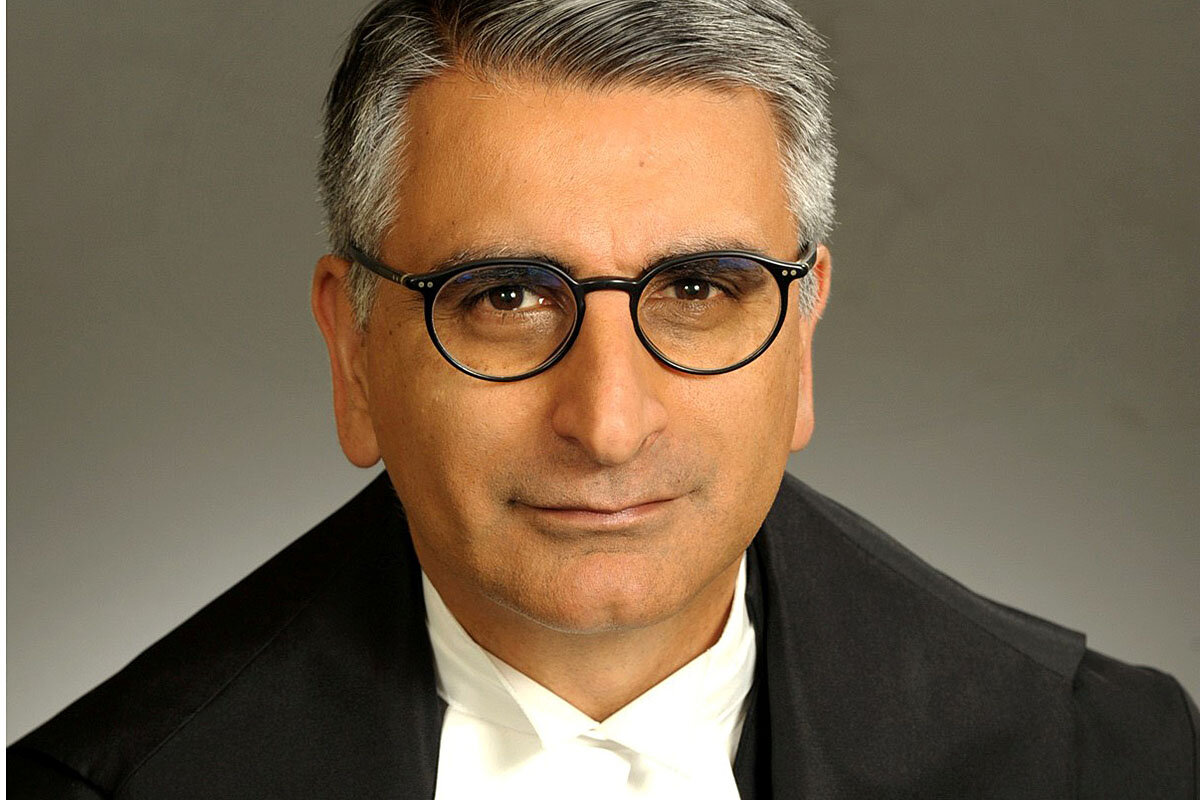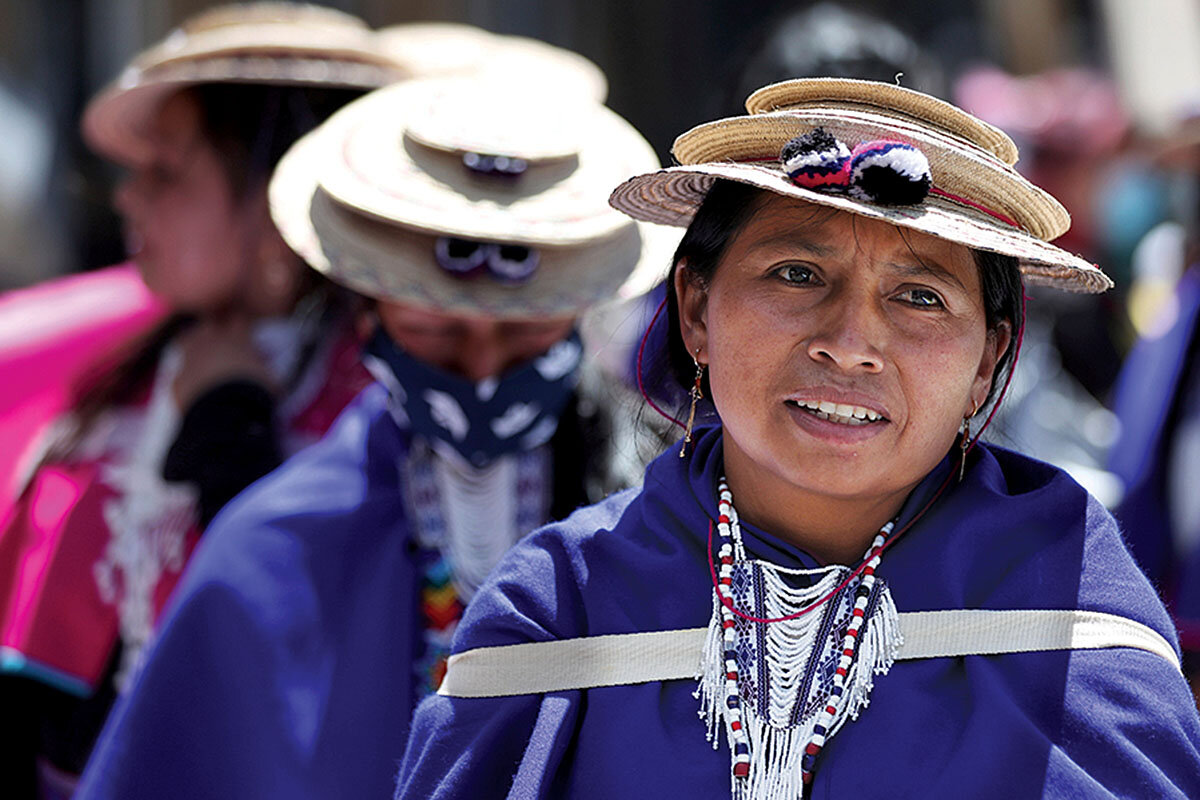More inclusive courts, from Canada to Colombia
Loading...
Our progress briefs include a recognition of animals in the third most populous U.S. state: Florida lawmakers committed $400 million to habitat conservation in a unanimous vote.
1. United States
Florida lawmakers have unanimously passed the Florida Wildlife Corridor Act, a milestone for the state’s unique wildlife. The law, which achieved a rare 115-0 House vote and 40-0 vote in the Senate, formally recognizes the existence of thousands of acres of undeveloped land stretching through Florida, offering critical habitat space for wildlife such as the endangered Florida panther, featured in a recent Monitor story.
Why We Wrote This
In courts of law, recognition of the dignity of all people can cascade to the rest of society. This month, Canada’s Supreme Court gained its first nonwhite justice. And in Colombia, the Constitutional Court is translating decisions into 26 Indigenous languages.
Lawmakers have committed $400 million to conservation. Part of that will be used to expand protected lands by acquiring conservation easements, in which state agencies or nonprofits hold development rights to privately owned land. This is considered an essential strategy to safeguard the corridor against overuse, pollution, and general habitat fragmentation. Conservationists say the need for the Florida Wildlife Corridor Act was urgent, as existing land acquisition programs could not keep up with the rate of development throughout the state. “We can protect our wildlife, protect our water resources and still provide home for our growing communities,” said Temperince Morgan, executive director of the Nature Conservancy in Florida. “It’s possible.”
WUSF, CNN, National Geographic
2. Canada
Mahmud Jamal is the first person of color to serve on the Supreme Court of Canada. Prime Minister Justin Trudeau nominated the longtime litigator to fill Justice Rosalie Silberman Abella’s vacancy following her retirement on July 1. The 146-year-old court had only ever had white justices, despite nearly a quarter of Canada’s population identifying as a member of a visible minority – a legal term encompassing nonwhite, non-Indigenous people – in the most recent census.
Born to Indian parents in Nairobi, Kenya, Mr. Jamal appeared in 35 appeals before the Supreme Court, worked on pro bono cases, taught at prestigious law schools, and most recently served as an Ontario Court of Appeal judge. During the vetting process, he expressed hopes that his appointment will allow more Canadians to see themselves reflected on the bench and inspire deeper trust in public institutions.
Deutsche Welle, Times Colonist, Statistics Canada, Office of the Prime Minister
3. Colombia
A partnership between the Colombian Constitutional Court and the Amazon Conservation Team is helping ensure Indigenous communities have access to important rulings that affect their rights. To date, the Rights in the Territory project has translated five landmark decisions into 26 Indigenous languages, most of which are based on oral traditions rather than a written system. The court and ACT worked closely with translators from different ethnic groups across the country to adapt the legal Spanish into resources that can be broadly understood within each community, rather than literal, word-for-word translations.
Although the court has issued thousands of judgments since its founding, the Rights in the Territory project prioritized those related to Indigenous autonomy, territories, ethnic diversity, environment and biocultural rights, and Indigenous and Afro-descendant groups’ rights to prior consultation. Audio and written summaries of these cases – including the origins, legal outcomes, and key takeaways – can be found online. The initiative is now working on adapting a second wave of judgments and expanding the communities served.
Mongabay, Derechos En El Territorio
4. Ukraine
Ukraine became 7.6% more peaceful last year, according to the latest Global Peace Index. Assembled annually by the Institute for Economics & Peace, the GPI is considered the leading metric for tracking peacefulness across the globe. It ranks 163 countries based on three categories: societal safety and security, ongoing conflict, and militarization. Despite tensions with Russia, Ukraine recorded significant improvements on a number of indicators. These include political terror, violent crime, and political stability, the latter being reflected in the 2019 presidential and parliamentary elections, which were both deemed free and fair.
Of the 87 countries that improved since the last index, Ukraine made the largest gains, and subsequently rose six spaces in the global rankings. Fewer countries deteriorated, but the index still found that the world became 0.07% less peaceful overall. However, this decline – driven in part by civil unrest and pandemic-related violence – is the smallest recorded dip in the 15 years of the index.
Institute for Economics & Peace, Ukraine News Agency
5. Mozambique
A new water supply system was inaugurated in Mossurize District in central Mozambique as part of a growing effort to expand access to safe drinking water throughout the country. Although water availability has improved in recent years, disparities between urban and rural access persist. The government’s Water for Life program has sought to fast-track the installment of new water systems, as well as upgrade old facilities, in accordance with the United Nations’ sustainable development goals. The program’s activities – including the creation of water storage dams and reservoirs – raised rural water supply coverage from 55% in 2018 to 62% in 2020, according to Public Works Minister Joao Machatine.
The latest system is located in Manica province, which has seen new facilities installed in five districts. Budgeted at $501,000, the project will initially serve 3,000 residents, and later expand to 9,000. The president called it “an important landmark” toward raising the rural population’s water supply coverage to 80% by 2024.
Mozambique News Agency, UNICEF, Construction Review Online
6. Indonesia
An interactive program allowing social media users to map natural disasters in real time is improving emergency responses in Indonesia and beyond. Located on the Ring of Fire, the island nation has a long history of tsunamis, earthquakes, and other natural disasters; climate change and population pressures have made cities like Jakarta especially hazardous. So when a user
tweets the word “flood,” Twitter account @PetaBencana automatically replies, “Hi, I’m Disaster Bot. To report flooding near you, reply with #flood.” Users can then log the water height and their location, and upload a photo of the site – data that is then added to an online map using open-source software called CogniCity.
While government agencies can struggle to organize incoming information during the early hours of a natural disaster, PetaBencana takes advantage of users’ established social media habits to create actionable intelligence that officials can then verify. Emergency responders and residents alike rely on these crowdsourced maps to know if roads or hospitals are accessible, and where help is most needed. The team behind PetaBencana has helped establish similar programs in Hong Kong, Vietnam, and the Philippines, and is working to adapt the platform for other social media apps.
Rest of World, CogniCity








